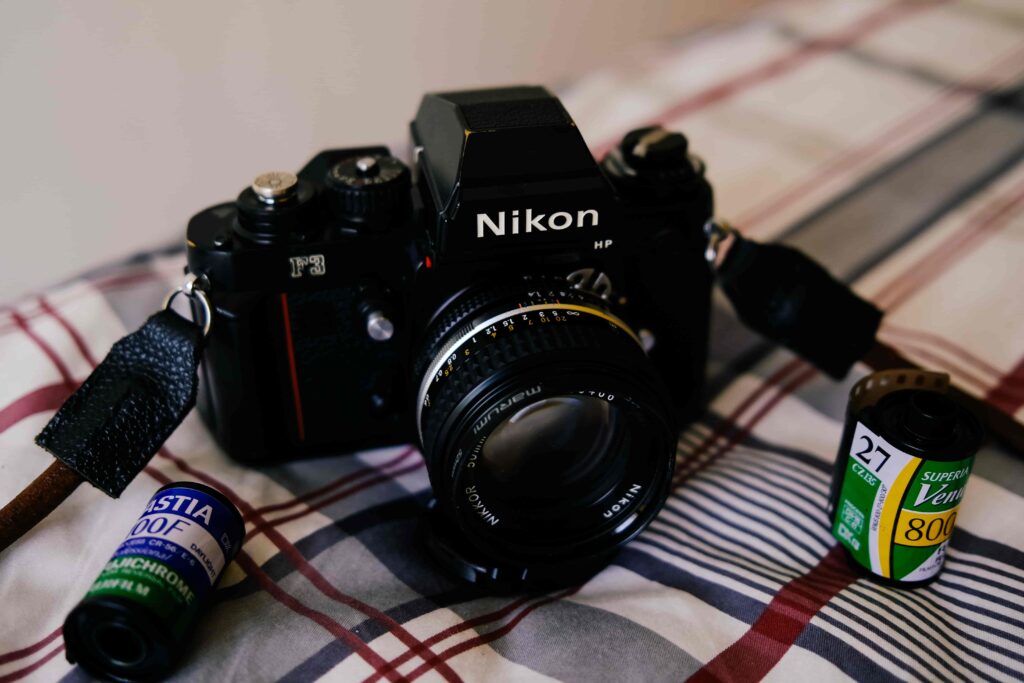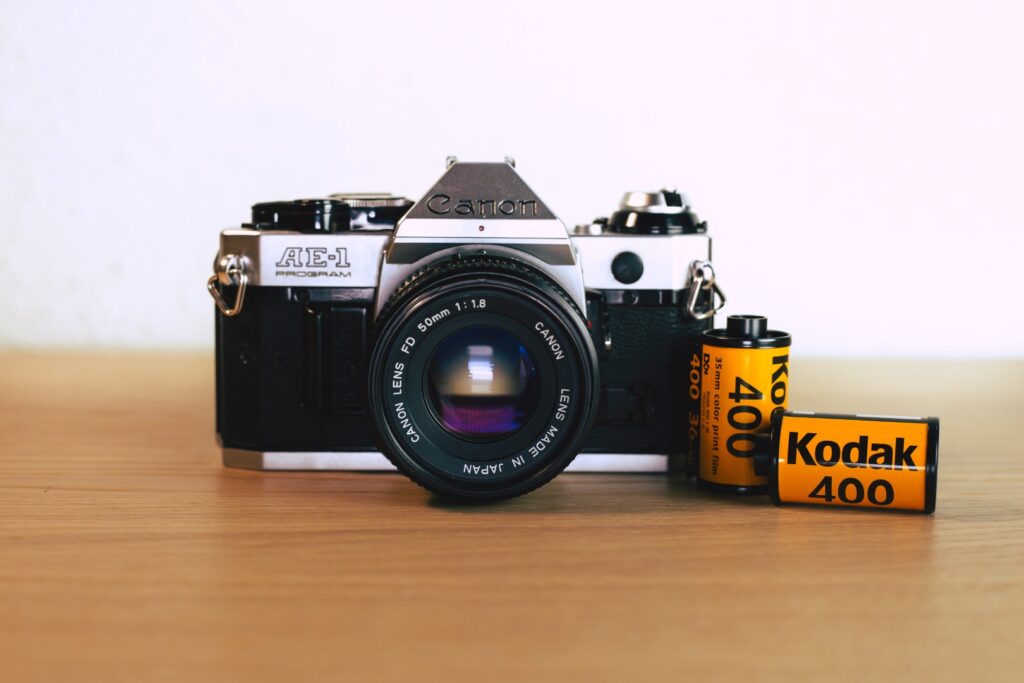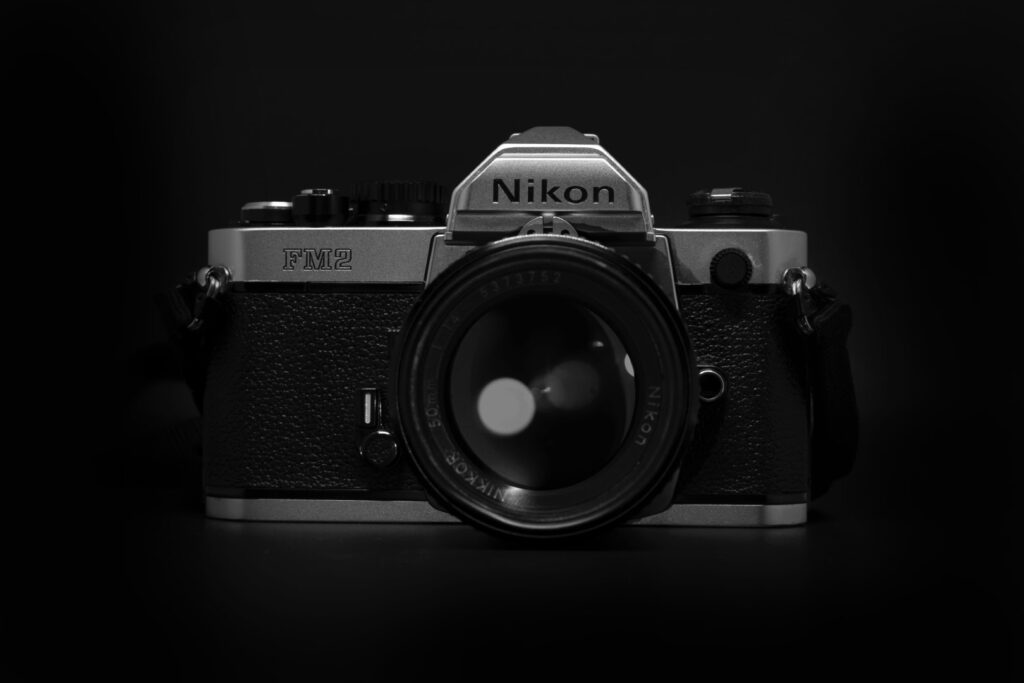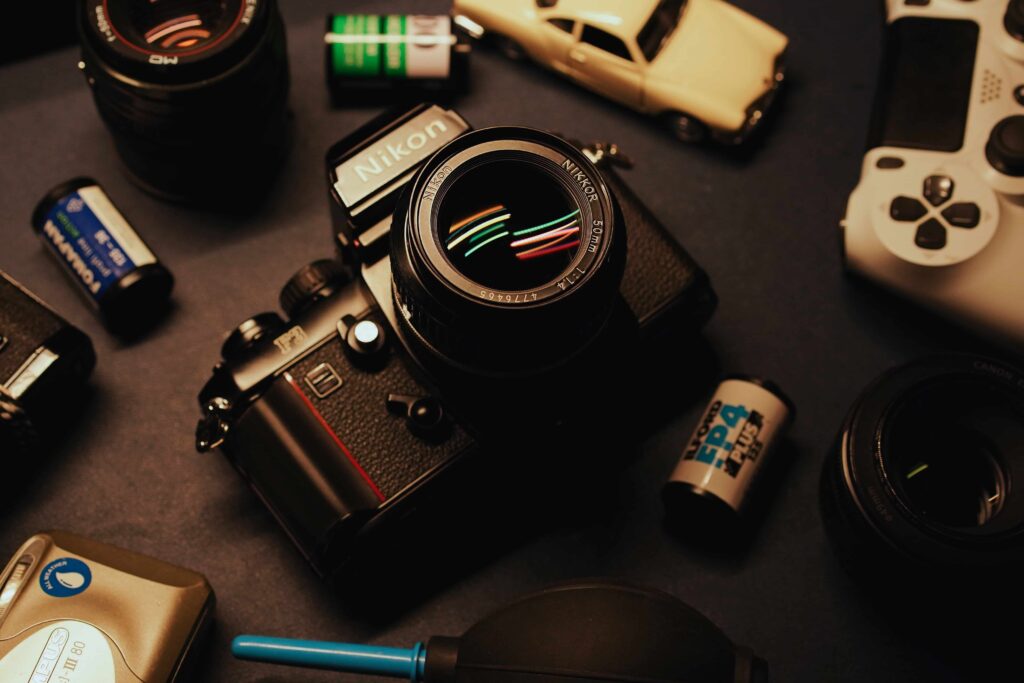Photography isn’t just a simple action; it’s a creative expression, a unique way to freeze time, narrate stories, and encapsulate feelings. For those fascinated by the timeless allure and authenticity of film photography, the Nikon F3 is a name that resonates significantly. Renowned for its robustness and extraordinary output, this camera has held its ground as a preferred pick among photographers for generations and it is no wonder that it is also holding its value, especially when looking at the recent price development
While working with the Nikon F3, the film you choose holds as much weight as the camera itself. The right film can illuminate your photos with striking color, depth, and intricate details. This guide is intended to streamline your film choice journey and assist you in discovering the ideal film for your Nikon F3.
The Different Types of Film Stocks

When it comes to choosing a film for your Nikon F3, understanding the different types of film stocks available in the market is crucial. The three main categories are black and white film, color negative film, and slide film. Each type offers a unique aesthetic and requires different processing methods.
Black and White Film
Black and white film is the original and classic film stock. It’s a favorite among street photographers, portrait artists, and anyone interested in capturing dramatic, timeless images. The lack of color enables the photographer to focus more on textures, shapes, and light contrasts, enhancing the emotional impact of the photograph. A popular choice for black and white film is the Ilford HP5 Plus, known for its wide exposure latitude and fine grain.
Color Negative Film
Color negative film is the most commonly used type of film in color photography. It produces a negative image, which can be processed and printed to achieve a positive final image. The advantage of color negative film is its wide exposure latitude, forgiving of slight mistakes in exposure settings. A notable example is the Kodak Portra line, well-loved for its fine grain and vivid, accurate color reproduction.
Slide Film
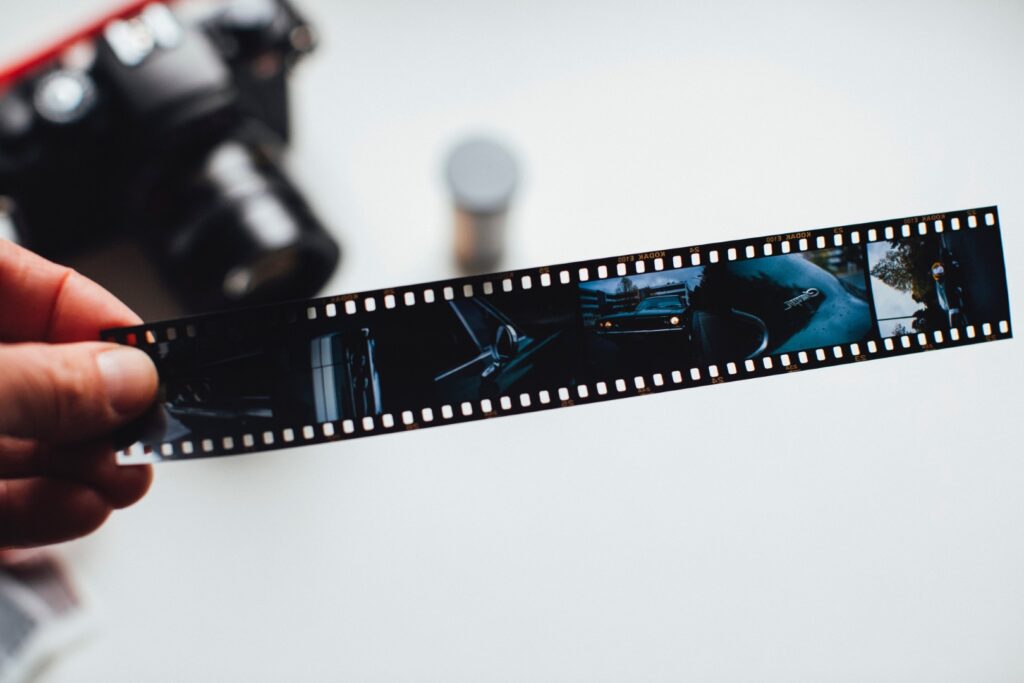
Slide film, also known as reversal or transparency film, directly produces a positive image when developed. This means the film can be projected onto a screen or scanned digitally without having to make a print or reversal. It offers vibrant, saturated colors and high contrast, making it a popular choice for landscape and commercial photography. However, slide film is less forgiving than color negative film, requiring precise exposure settings. One of the well-known slide films is Fujifilm’s Velvia, admired for its rich, vibrant colors and high saturation.
Considerations When Choosing a Film for your Nikon F3
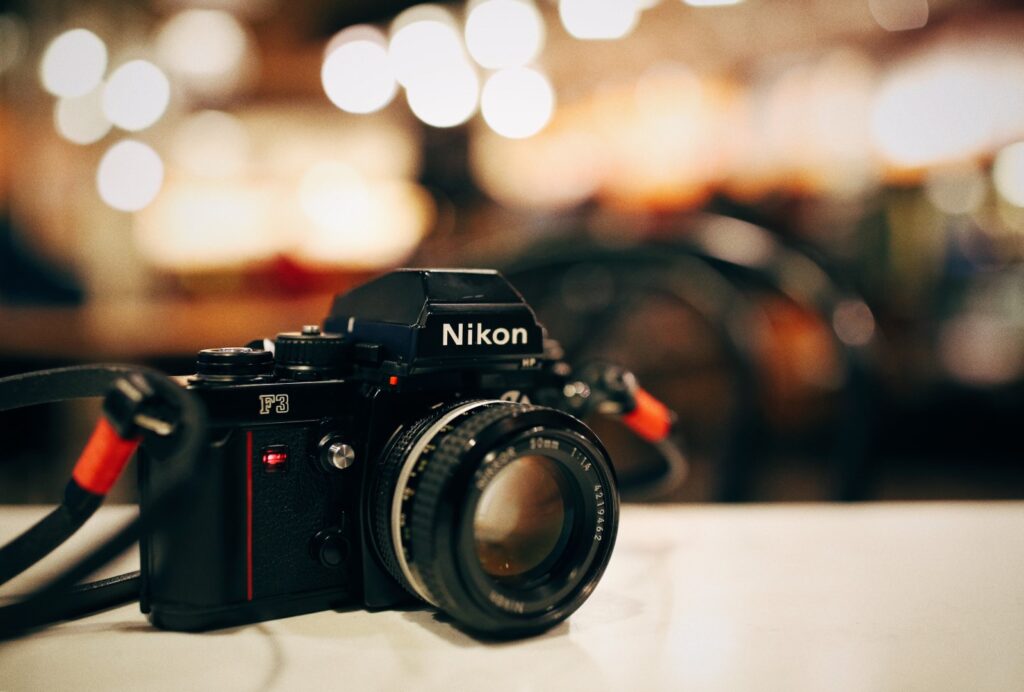
Choosing a film for your Nikon F3 involves considering various factors. Your choice can profoundly affect the look of your images and the flexibility of your shooting conditions. The main considerations include film speed, the aesthetic qualities of the film stock, and the development and scanning process.
Film Speed
Film speed, indicated by the ISO number, represents the film’s sensitivity to light. Lower ISO films (like ISO 100 or 200) require more light to create a well-exposed image and tend to produce less grain, leading to sharper, clearer images. They’re excellent for outdoor shooting in bright conditions. On the other hand, higher ISO films (such as ISO 800 or 1600) are more sensitive to light, allowing for shooting in lower light conditions but resulting in more grain. Selecting the film speed primarily depends on your shooting conditions and the look you aim to achieve.
Aesthetic Qualities of the Film Stock
Different film stocks produce distinct colors, contrasts, and grain structures, leading to unique aesthetics. For instance, some films yield warmer skin tones, while others might enhance blues and greens, making them ideal for landscape photography. Grain structure can also vary, with some films giving a fine, smooth grain and others a more noticeable, grainy texture. Your choice here depends on the style and mood you’re aiming for in your photographs.
Developing and Scanning Film
Before choosing a film, it’s important to consider how you plan to develop and scan it. Some films, like C-41 process color negatives, can be developed at most photo labs. Others, such as E-6 process slide films or traditional black and white films, may require specialized labs or home processing. Similarly, different films may yield different results when scanned, with some being more challenging to digitize than others due to their contrast or color balance. It’s crucial to take these factors into account, especially if you plan to digitize your film for online sharing or digital printing.
Top Film Choices for Nikon F3
Choosing the right film for your Nikon F3 can greatly influence your final images. Depending on the aesthetic you aim to achieve, certain films might better fit your vision. Here are some recommended film stocks for color, black and white, and slide film.
Color Films
Kodak Portra 400: Known for its exceptional color reproduction and versatility, Kodak Portra 400 is ideal for capturing portraits, street scenes, and landscapes. Its balanced grain and accurate skin tone rendering make it a popular choice among professional photographers. Check current prices here.

Fujifilm Superia X-TRA 400: This film provides vivid colors and fine grain, making it excellent for a variety of lighting conditions. Its high sharpness and wide exposure latitude also add to its appeal. Check current prices here.

Lomography Color Negative 800: For those who want bold, saturated colors and a unique aesthetic, Lomography Color Negative 800 is an excellent choice. It is particularly well-suited for a range of lighting conditions, including low light, thanks to its high ISO speed. Check current prices here.
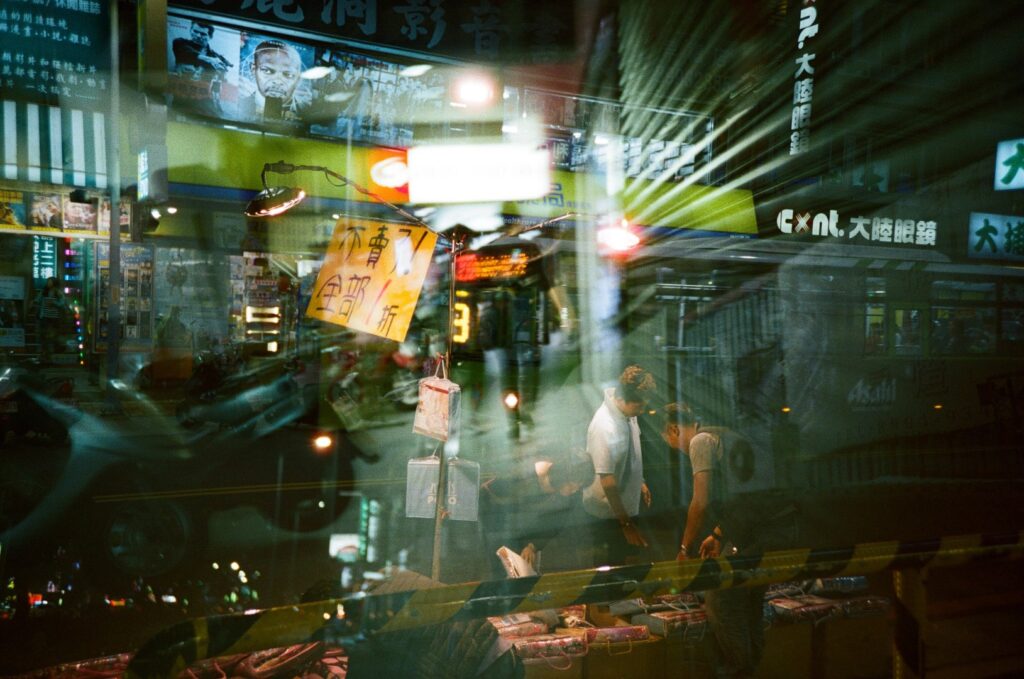
Black and White Films
Ilford HP5 Plus: This versatile black and white film has a broad exposure range and offers good contrast and sharpness. It’s great for a wide variety of shooting scenarios, from landscapes to street photography. Check current prices here.
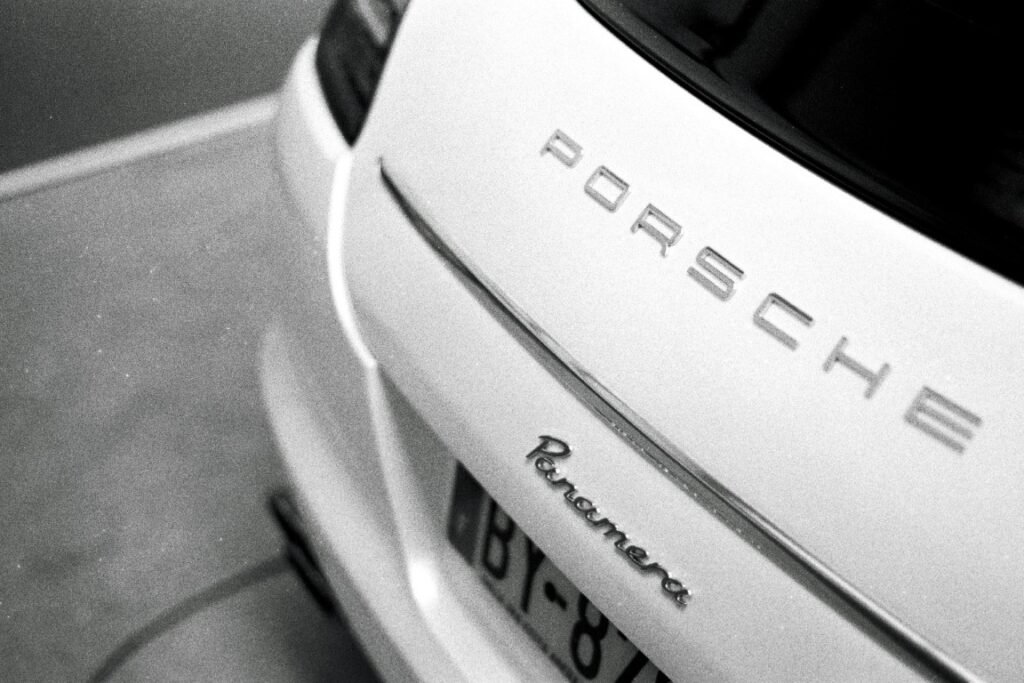
Kodak Tri-X 400: Known for its rich tonal range and flexibility, Tri-X 400 is a favorite among black and white film enthusiasts. Its classic grain structure adds a timeless aesthetic to photographs.

Foma Fomapan 100 Classic: Offering a very fine grain, high resolution, and wide exposure latitude, Fomapan 100 is excellent for capturing a high level of detail in well-lit conditions. Check current prices here.

Slide Films
Fujifilm Velvia 50: Velvia 50 is well-loved for its incredibly vibrant colors and contrast, making it ideal for landscape and nature photography. It’s best used in situations where precise exposure control is possible. Check current prices here.

Kodak Ektachrome E100: This slide film is known for its rich saturation and contrast, with neutral tones and excellent color accuracy. It’s a good choice for capturing vivid and lifelike images. Check current prices here.

Budget-Friendly Film Alternatives
Top-tier film doesn’t always have to cost a fortune. There are affordable film options available that can still yield remarkable results, particularly for those venturing into the world of film photography or those who want to experiment without straining their wallets.
Kentmere 400 (B&W): A popular pick among novices, Kentmere 400 is an economical black and white film from Harman Technology (the same enterprise that produces Ilford films). While it may not be as sophisticated as some high-end films, Kentmere 400 presents a pleasing grain structure and good sharpness, making it a dependable, budget-friendly choice for everyday shooting. Check current prices here.
Fomapan 400 (B&W): Another cost-effective black and white film, Fomapan 400 is widely liked by students and those new to film photography. It offers a good contrast and grain balance and is flexible in terms of exposure, providing some leeway for errors as you hone your skills. Check current prices here.
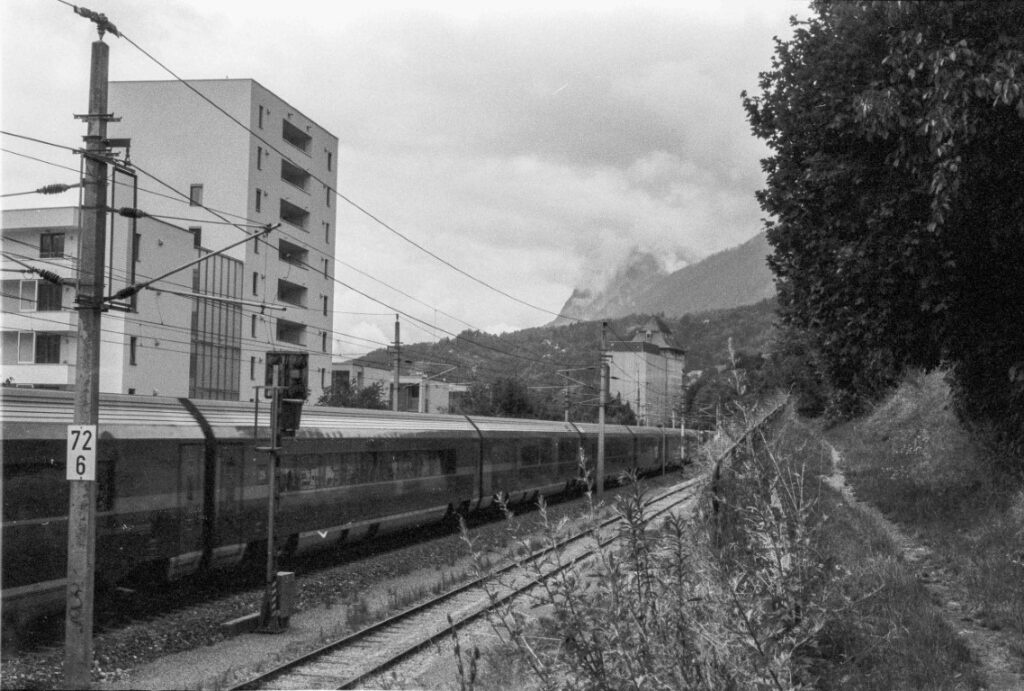
For more Foma 400 images, check out my Fomapan 400 Flickr album. We’ve captured our firsthand experiences with Fomapan 400 in this YouTube video, covering everything from shooting to self-developing the film. Take a look for a comprehensive look.
Kodak Gold 200 (Color): This is an economical color negative film that renders warm, vibrant colors with reliable performance. Kodak Gold 200 is recognized for its slightly nostalgic feel, reminiscent of earlier times. It’s an excellent option for outdoor and well-illuminated scenarios, delivering appealing results at a pocket-friendly price. Read our full review here. Check current prices here.
In film photography, it’s important to remember that the cost doesn’t always correlate with the quality. Some of the most intriguing photos come from photographers experimenting with various film stocks, including these affordable options. Don’t hesitate to try different films and discover what complements your Nikon F3 best.
Frequently Asked Questions about Using Film with the Nikon F3
Film photography with a Nikon F3 can raise several questions, particularly for beginners. Here are answers to some of the most commonly asked questions.
Can you use color film on a Nikon F3?
Yes, you can use both color and black & white film in a Nikon F3. The camera supports any 35mm film, which includes color negative film, slide film, and black & white film.
What size film does the Nikon F3 use?
The Nikon F3 uses 35mm film, the most common type of film available. This allows you a wide range of options when choosing the type and brand of film to use.
How do you put 35mm film in a Nikon F3?
To load 35mm film into a Nikon F3, you open the camera’s back, place the film canister in the left chamber, pull the film leader across to the right and insert it into the take-up spool, then close the back and wind the film until it’s ready to shoot.
Does the Nikon F3 work without Batteries?
The Nikon F3 relies on batteries for its automatic functions, including the shutter. Without batteries, you can use a backup mechanical lever, but it will only operate at a fixed shutter speed of 1/60. For more information and detailed insights, you can refer to our battery guide on the Nikon F3.
How to choose the right film for your camera?
Choosing the right film depends on the type of photography, lighting conditions, and the aesthetic you’re aiming for. You might choose a high ISO film for low light conditions, a black & white film for a classic look, or a specific brand of color film for its unique color rendition.
Is the Nikon F3 a 35mm camera?
Yes, the Nikon F3 is a 35mm SLR (Single Lens Reflex) camera. This means it uses 35mm film and you view your scene through the same lens that takes the picture.
How fast is the Nikon F3?
The Nikon F3 has a maximum mechanical shutter speed of 1/2000th of a second. It also has a Bulb mode for long exposures. Its maximum flash sync speed is 1/80th of a second.
What is the ISO range on Nikon F3?
The Nikon F3 supports a wide ISO range, from 12 to 6400, making it highly versatile for different lighting conditions and film speeds.
What makes the Nikon F3 special?
The Nikon F3 is special due to its exceptional build quality, reliability, and flexibility. It offers interchangeable viewfinders, a robust mechanical design, and excellent ergonomics. It was also the first Nikon camera to feature the red stripe on the handgrip, a design element that has become a Nikon hallmark.
How do you wind up a Nikon F3?
After taking a shot on your Nikon F3, you wind the film using the film advance lever on the top right of the camera. This prepares the camera for the next shot by advancing the film to the next frame.

